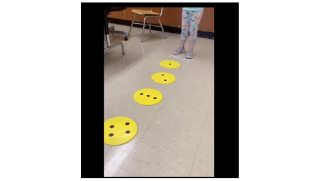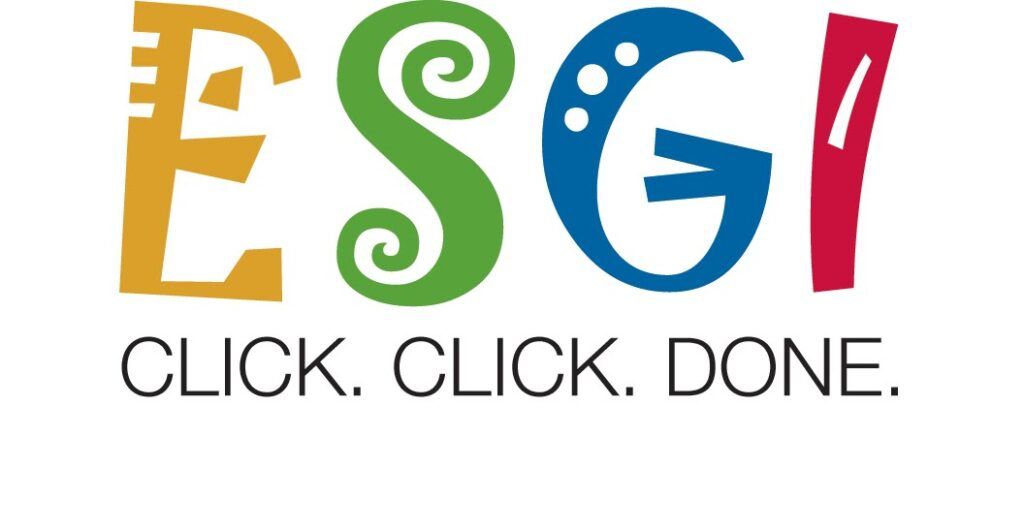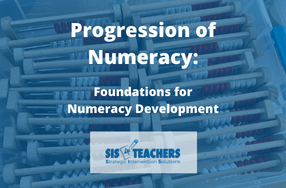Numeracy development is key at the beginning of the year! Within the first three weeks of starting school, whether you are a PreK or Kindergarten teachers, we want to find out where students are within their early math levels so you can plan for the rest of the year, just like we do in literacy!
In this back-to-school blog series, we’re going to go through the different types of conservation milestones that we want kids to hit, as well as how we will know they have the early foundations of numeracy in place before we start building number sense.
When looking at levels of numeracy, the first thing we want to do is screen students to find out where they are, just like you would screen students for phonemic awareness. We want to look deeply to see if students can play with number concepts – either with their whole body or within a certain level of number conservation, either to 5 or 10.
Screening for Kinesthetic One-to-One Correspondence in PreK
The first level we’ll look at is the kinesthetic level, and to help teachers do that quickly, the ESGI assessment system provides an assessment that you can customize on your own, or you can use mine, which is already loaded in and easy to implement with your littles!
PreK teachers want to start by looking at their students to make sure they have kinesthetic one-to-one correspondence. In this video, we screened some early Kindergarteners for this skill, and you’ll see that one of the students has great kinesthetic one-to-one correspondence, and the other does not. Have you screened your PreK students for this skill? If you’re a Kindergarten teacher, are there students in your classroom that still do not exhibit this skill?
ESGI makes it simple to find out! This tutorial video shows you how to use my kinesthetic one-to-one correspondence screener to quickly assess a PreK class or any student in Kindergarten that might not be at the level we’re looking for.

To perform the screener, you’ll need 10 poly spots, which we have available in our store. Before you begin the screener, label each poly spot with dots from 1 to 10 in a familiar pattern. For 1 through 6, you can use a dice pattern, and then for 7, 8, 9, and 10, I use a 10 frame format to keep the dots orderly and numerical. You don’t want numbers on these poly spots because we’re trying to see if kids have a skill called counting and cardinality.
Then, using the ESGI checklist, you simply ask students to stand at the beginning of the number line and to walk to a particular number while counting kinesthetically. When students can do this, we know they have kinesthetic one-to-one correspondence.
I’ve often described kinesthetic one-to-one correspondence like rhyming. If you ask a child to supply a rhyme for cat and hat, and they say water bottle, you know they don’t really have the phonemic awareness skills that are needed to start rhyming. It’s the same way with kinesthetic one-to-one correspondence. We can’t necessarily teach kids to have this skill, and it’s very obvious when students don’t have it, but as they practice counting and corresponding their body to the numbers, we will eventually notice that students can learn this skill quite quickly.
If students can walk on the poly spots, as you saw, with confident one-to-one correspondence, we mark Yes to the first question.
Then, we take the students off of the poly spots to ask the second question on our ESGI checklist. We want to see if they can maintain the same kinesthetic one-to-one correspondence without a guide. In the video, you can see that one student is able to do it, but the other student is not. Typically, if a student doesn’t have one-to-one correspondence ON the poly spots, she will not have it without the poly spots, but you do want to check both parts of this screener.

Kinesthetic one-to-one correspondence is an essential skill that we want to help our littles build. You can check out our series on math4littles, which highlights mathematical thinking all around us, to find lots of different activities that kids can do to help build kinesthetic one-to-one correspondence in their daily routines.
Screening in Kindergarten
What about our students in Kindergarten? Is it necessary to assess every single Kindergartener on our kinesthetic one to one correspondence? At one time, we did that. However, it was kind of a lengthy process to find out that most of our students had the skill in place. Instead, we realized that, when kids don’t have the skill of conservation to five, they would more than likely not have kinesthetic one-to-one correspondence either.
It’s a matter of development. As you can see in this pyramid of math development, we want kids to have lots of opportunities to interact with real objects in the physical world, and then to be able to build kinesthetic one-to-one correspondence before going on to conservation to five.
In Kindergarten, we want to use our ESGI checklist to assess conservation to five. If a child fails this assessment, only then do we need to back our way out and screen that student to determine if kinesthetic one-to-one correspondence is in place, since that is a foundational part of math development.
In this screener you’ll see that we are really looking in depth at the conservation of five. We want to see if students can recognize a quantity, from 1 to 5, regardless of how it is presented. We’re going to show students the five frames vertically, as well as horizontally to make sure that students aren’t just memorizing the five frame, but actually processing and thinking through why they know what they know. The ESGI screener also includes dice patterns, again stopping at five, just to make sure students are solid on this concept of conservation to five.
Think about how long it would take you to screen your students. You have to get your five-frame cards and your conservation to five cards (either dice or domino pattern), then you have to go through your five frames horizontal, then vertical, and then through all your dice or dominoes. Multiply that by how many students??
I love how ESGI says “click click done” because it’s really that easy to use their screeners! It’s all digital, so your students can be anywhere while you’re working to assess their numeracy skills – they can be in the Playhouse or maybe out on the playground (kids will think it’s fun to come over to sit with you and do their assessment on your mobile device!)
Remember, if a student fails this and they don’t have 80% accuracy, or better, we want to go back and double-check that they have the kinesthetic one-to-one using the first ESGI screener.
Sometimes you’ll go back and find out that kids are doing great! Don’t be alarmed if you go back and find that they have pretty good kinesthetic one-to-one correspondence. That probably means that they’re really ready for being able to look at conservation to five and work on that level!
Readiness for Conservation to 5
Once we’ve screened all of our students, let’s get them going with numeracy talks! This is a great way to help students as they begin to work on their conservation to 5 and early numeracy skills.
We have a great new product that is designed to help you implement these numeracy talks in your classroom! Our Numeracy Talks series follows a very systematic structure of that will help your students progress through numeracy development. Each of the four Progression Cards corresponds with a classroom-ready PowerPoint presentation that you can use to guide them through the activities.
For Kindergarten, these are great to start at the beginning of the year! In PreK, this series will come in handy in January, once you’ve built the kinesthetic one-to-one correspondence and are ready to move on to conservation to 5.
You can begin with Numeracy Talks Basics, a free video that will help you get numeracy talks going in your classroom. The first progression card is a freebie you can download here, which has everything you need to get started and see how it works in your classroom! As you start to see improvement in your students’ numeracy, you can get the whole bundle for conservation to 5 – Progression Cards #1-4, the corresponding presentations and tutorial videos – in our store.
If you’re one of our M3 Members, you have free access to this whole series and all kinds of other videos that we’ve produced in the area of numeracy! Check it out here!
Supporting Numeracy Development with Games!

Deck o’ Dots games are the perfect addition to numeracy talks to support numeracy development! Our red level is all about conservation to five, with vertical and horizontal five frames. Half of the green deck shows scatters from zero to five, which is perfect for conservation to five to help students build an understanding of scatters.

The Deck o’ Dots cards go hand-in-hand with the Progression Cards from our Numeracy Talks series, matching the horizontal view of the five frame, then the vertical view, the scatter, and then mixed modalities.
We want to hear from you!
How are numeracy talks going? Do your students love Deck o’ Dots? How did you do on the screener?

Have you checked out ESGI to see the kinesthetic one-to-one correspondence screener and the conservation to five screener? Make sure you use the promo code SIS4Teachers to get a free trial, and if you like it, you can use it for your whole class! Just imagine being able to see, at a gland, where all your students are with this concept of conservation to five! It will save you hours and hours, I promise!
Up next week – let’s move through the conservation milestones to look at conservation to ten and check on our first graders as they are coming into the school year. I’ll show you another great ESGI screener and give you another sneak peek into our numeracy talk series – don’t miss it!



